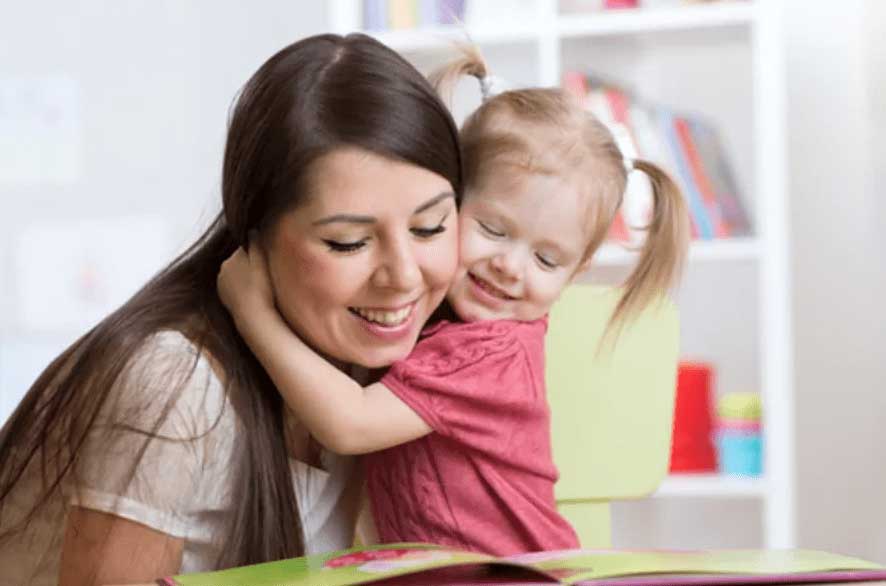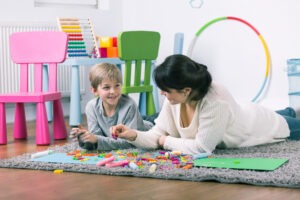When do children develop pronouns?
Children learn pronouns as part of their overall speech and language development. Pronouns, such as “I,” “you,” “he,” “she,” “it,” “we,” and “they,” are used to refer to people, animals, and things in a sentence. As children learn to speak, pronoun errors are part of the learning process. Most of the time, these errors are age-appropriate. Some children will not fully master all pronouns until the age of 4. Pronouns typically develop in a predictable order. See the the pronoun ages of acquisition below for the age ranges in which children typically develop pronouns.
12-26 months: I, it
27-30 months: my, me, mine, you
31-34 months: your, she, he, your, we
35-40 months: they, us, hers, his, them, her
41-46 months: its, our, him, myself, yourself, ours, their, theirs
47+ months: herself, himself, itself, ourselves, yourselves
Children understand the meaning behind a pronoun before they begin using it in their speech. For example, a child will likely understand that “they” indicates more than one person before they consistently use the pronoun “they” in a sentence or phrase. A pronoun is considered “mastered” when a child uses it correctly 80% of the time.
Considerations for Teaching Pronoun Acquisition
Keep in mind that pronouns should be taught with respect to an individuals identifying gender. Avoiding gender stereotypes when our children are young will model respect for others. As children get older, conversations about
Strategies to Help You Child Learn Pronouns
Use Gestures:
Gestures are a great non-verbal way to highlight pronouns. Point to yourself when saying “I’ or “my.” Help your child pat their chest for “me” or “my.” When watching others, point and describe their action (i.e. “he is running”).
Model Correct Production:
In order to help your child with pronoun acquisition, we recommend modeling accurate pronoun in your own speech. It is natural to use third person when talking to our babies (i.e. “mommy will get it”). That said, once your child is speaking, make an effort to accurately use pronouns (“I will get it”). When children make pronoun errors, use intonation to highlight the correct pronoun without directly pointing out the error (child: “her is eating.” caregiver: “that’s right, SHE is eating”).
Use Mirrors, Photos and Books:
Looking in the mirror can be a great way to teach pronouns. Help your child pat their chest and say “that’s ME.” Photos and books are excellent tools for teaching your child pronouns. Describe the actions of others while highlighting pronouns. As a bonus, indicating the feelings of others in books and photos is also a great way to teach empathy and perspective taking (i.e. “he is happy because his dog came home”).
Teletherapy or In-Home Speech Therapy for Pronoun Acquisition
While most children develop pronouns independently, some children will need assistance. Children with expressive and receptive language disorders often have difficulty with this aspect of grammar. When a child has difficulty understand or producing pronouns, a consultation with a speech language pathologist is recommended. Teletherapy or in-home speech therapy are easy and convenient way to connect with our therapy team to determine whether your child would benefit from speech therapy for pronoun development.
TherapyWorks has built a large network of therapists with a variety of backgrounds, all of whom hold a masters or doctorate degree in their field and have significant experience working with children with speech and language delays and disorders. Our extensive talent pool enables us to thoughtfully match each child with a therapist that has the right training and experience based on that child’s specific needs. The result is effective, successful therapy.




